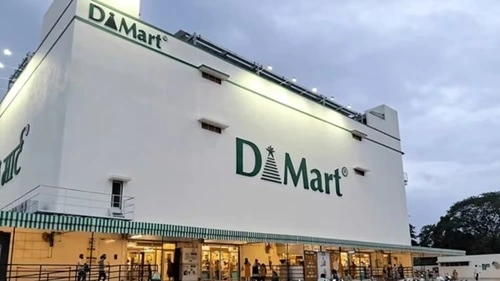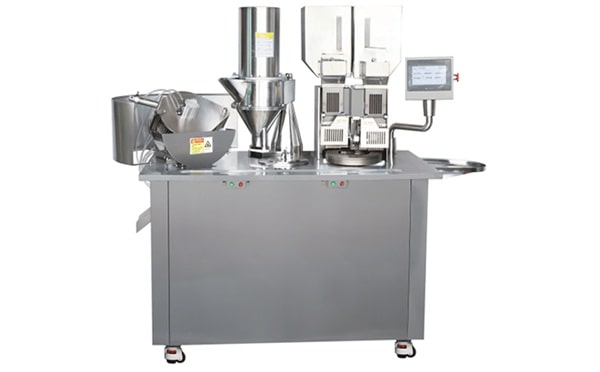DMart, owned by Avenue Supermarts Limited, is one of India’s most successful retail chains, known for its deep discount pricing model and extensive range of consumer goods. Founded by Radhakishan Damani in 2002, DMart has grown to over 300 stores across India, with a loyal customer base drawn to its affordability, variety, and in-store shopping experience. DMart has carved a niche in India’s organized retail sector, offering a wide selection of grocery, household essentials, apparel, and more, catering to the needs of middle-income households. However, as the retail industry undergoes significant transformation with increasing competition from e-commerce, changing consumer behaviors, and a dynamic economic environment, DMart faces both opportunities and challenges. This SWOT (Strengths, Weaknesses, Opportunities, Threats) analysis provides insights into DMart’s current market position and future outlook.

Strengths
1. Strong Brand Reputation and Customer Loyalty:
DMart has built a strong brand reputation over the years by consistently delivering value to customers through affordable prices and quality products. Its loyal customer base, particularly among India’s middle-income groups, sees DMart as a go-to destination for essential goods. This brand loyalty has been instrumental in establishing DMart as a preferred retail chain in India, helping it compete effectively against both local kirana stores and larger players.
2. Cost-Efficient Model with Focus on Value Pricing:
One of DMart’s key strengths is its cost-efficient business model, which allows it to offer products at highly competitive prices. By owning most of its store properties, DMart significantly reduces rental costs, thereby lowering its operating expenses. Its focus on bulk purchasing, efficient supply chain management, and limited spending on advertising enables DMart to pass savings on to customers through its discount-driven pricing model. This low-cost, value-based strategy has helped DMart thrive in India’s price-sensitive retail market.
3. Extensive Product Range Catering to Daily Needs:
DMart offers a wide range of products, including groceries, personal care items, household goods, apparel, and kitchenware. This extensive selection allows it to cater to the everyday needs of Indian households, attracting regular footfall and repeat customers. The company’s focus on essential goods positions it well to capture demand from consumers looking for affordability and convenience in one place.
4. Strong Financial Performance and Cash Flow Management:
DMart’s disciplined approach to store expansion, cost management, and efficient operations has translated into a strong financial performance, with consistent revenue growth and profitability. Unlike many retailers that rely on heavy debt, DMart has a relatively low debt burden and generates healthy cash flows, enabling it to fund expansion from internal resources. This financial strength provides DMart with the flexibility to expand its store network and invest in infrastructure without relying heavily on external financing.
Weaknesses
1. Limited E-commerce Presence and Digital Reach:
DMart’s limited presence in the e-commerce space is a significant weakness, particularly in an era when consumers are increasingly shopping online. While DMart launched DMart Ready, an online platform offering home delivery and store pick-up, its online operations remain relatively limited compared to major e-commerce players like Amazon, Flipkart, and Reliance’s JioMart. This limited digital reach constrains DMart’s ability to capture the growing segment of tech-savvy, convenience-focused consumers.
2. High Dependence on Physical Stores and Limited Store Locations:
DMart’s revenue model is heavily dependent on physical stores, with a limited presence outside its core markets of western and southern India. This reliance on physical retail locations makes DMart vulnerable to disruptions like the COVID-19 pandemic, which forced store closures and impacted footfall. Moreover, limited store presence in certain regions, including parts of North and Northeast India, restricts DMart’s ability to capture demand from these areas.
3. Narrow Focus on Essentials and Limited Diversification:
While DMart’s focus on essential goods has been a strength, it also limits the company’s growth potential in other high-margin categories, such as electronics, home décor, and fashion. Competitors like Reliance Retail and Amazon offer a broader product range, allowing them to capture a more extensive consumer base. This narrow focus could restrict DMart’s ability to diversify its revenue streams and capitalize on higher-margin products.
4. High Inventory Turnover Dependence:
DMart’s business model relies on high inventory turnover and frequent restocking to maintain its low-cost pricing strategy. This dependence on fast-moving inventory can be challenging during economic downturns, supply chain disruptions, or periods of reduced consumer spending. Any disruption in DMart’s inventory management or supply chain operations could impact its ability to keep shelves stocked and maintain the desired customer experience.
Opportunities
1. Expansion of E-commerce and Omnichannel Capabilities:
With digital adoption rising in India, expanding its e-commerce and omnichannel presence offers a significant growth opportunity for DMart. Investing in the DMart Ready platform, enhancing online shopping features, and improving delivery capabilities can help DMart tap into the growing demand for convenience-based shopping. By integrating its online and offline channels, DMart can offer customers a seamless shopping experience, catering to both in-store shoppers and online consumers.
2. Increasing Presence in Tier 2 and Tier 3 Cities:
India’s Tier 2 and Tier 3 cities represent a substantial growth potential for DMart, with rising incomes and increasing demand for branded retail experiences. By expanding its store network into these emerging cities, DMart can capture new consumer bases who are looking for affordable and quality retail options. Targeted marketing efforts and region-specific product assortments can help DMart appeal to these price-sensitive markets.
3. Diversification into High-Margin Product Categories:
While DMart has traditionally focused on essentials, there is an opportunity to diversify into higher-margin categories, such as electronics, home furnishings, and fashion. By gradually introducing these categories, DMart can attract a more extensive customer base and increase its average transaction value. Additionally, offering more exclusive brands or private-label products can boost margins and strengthen customer loyalty.
4. Strategic Partnerships and Collaborations:
Forming partnerships with suppliers, logistics providers, or technology companies can help DMart enhance its operations and streamline its supply chain. Collaborations with logistics firms could improve its e-commerce delivery capabilities, while technology partnerships could enable DMart to enhance data analytics and customer insights. These partnerships could provide DMart with a competitive edge by enabling it to deliver products more efficiently and improve customer satisfaction.
Threats
1. Intense Competition from E-commerce Giants and Organized Retailers:
DMart faces intense competition from both e-commerce giants like Amazon and Flipkart, as well as organized retailers like Reliance Retail, Big Bazaar, and JioMart. These competitors have significant resources and established digital platforms, which allow them to offer extensive product categories and convenient online shopping experiences. This competition could impact DMart’s market share, particularly if it does not keep pace with the digital transformation in retail.
2. Supply Chain Disruptions and Rising Operational Costs:
DMart’s cost-efficient model relies heavily on efficient supply chain management and low operating costs. However, rising prices of raw materials, fuel, and labor could increase operational costs, impacting profit margins. Additionally, supply chain disruptions caused by factors like the COVID-19 pandemic or geopolitical issues could affect DMart’s ability to maintain its inventory turnover and fulfill consumer demand.
3. Vulnerability to Economic Cycles and Consumer Spending Patterns:
DMart’s focus on essential goods gives it some resilience during economic downturns, but it is not immune to changes in consumer spending patterns. During periods of economic slowdown or inflation, discretionary spending may decline, impacting sales of non-essential items. Furthermore, rising inflation can reduce disposable income, affecting customer purchasing behavior even for essential goods.
4. Regulatory and Compliance Risks:
The Indian retail sector is subject to various regulations and policies that govern aspects like pricing, labor laws, and data privacy. Compliance with these regulations can be complex and costly, particularly for large-scale operations like DMart. Any regulatory changes or increased compliance requirements, such as mandates on foreign direct investment (FDI) in retail or changes in tax policies, could impact DMart’s operational flexibility and profitability.
Future Outlook
DMart’s future outlook is promising, given its strong brand, loyal customer base, and cost-efficient operating model. The Indian retail sector is poised for growth, driven by urbanization, rising incomes, and evolving consumer preferences, all of which provide a fertile ground for DMart’s continued expansion. As DMart expands its store network in both metropolitan cities and emerging towns, its value-driven model is well-suited to capture demand from price-sensitive consumers.
To remain competitive, DMart must strengthen its e-commerce capabilities. Investing in its DMart Ready platform, enhancing delivery options, and offering more integrated online-offline experiences will be essential to attract tech-savvy consumers. With the growing importance of convenience, DMart’s omnichannel strategy could play a critical role in retaining customers who are increasingly shopping online.
Expanding into new product categories, including higher-margin items like electronics, homeware, and private-label brands, could also enhance DMart’s revenue streams. By catering to a broader range of consumer needs and introducing premium product offerings, DMart can attract a more diverse customer base and improve profit margins.
DMart should also continue its expansion into Tier 2 and Tier 3 cities, where branded retail chains are gaining popularity. Tailoring its offerings to meet the preferences of regional markets and expanding its footprint in underserved areas will strengthen its presence and growth potential.
However, to navigate the challenges of intense competition and rising costs, DMart must focus on maintaining operational efficiency and a lean cost structure. Enhancing its supply chain resilience and managing rising operational expenses will be key to sustaining profitability. Additionally, proactive measures to comply with regulatory standards and respond to economic fluctuations will ensure DMart’s long-term stability.
In conclusion, DMart’s strengths in brand reputation, low-cost pricing, and financial discipline position it well to capture growth in India’s dynamic retail market. By embracing digital transformation, diversifying product offerings, and expanding its geographical reach, DMart can adapt to changing consumer behaviors and secure its position as a leading player in India’s retail sector. With a strategic focus on affordability, innovation, and customer-centric solutions, DMart is well-prepared to capitalize on emerging opportunities and navigate future challenges.

